Metrosideros: description of types and rules of care
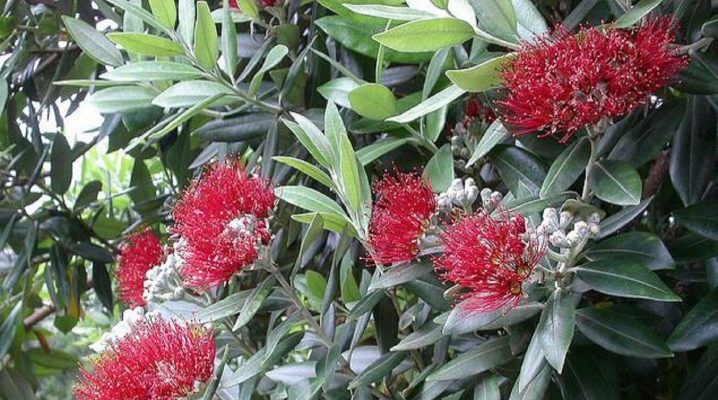
Metrosideros (Myrtle family) has excellent decorative characteristics. He is able to decorate any home. In the wild, the plant grows in Indonesia, the Philippines, New Zealand, Malaysia, South Africa, Central America.
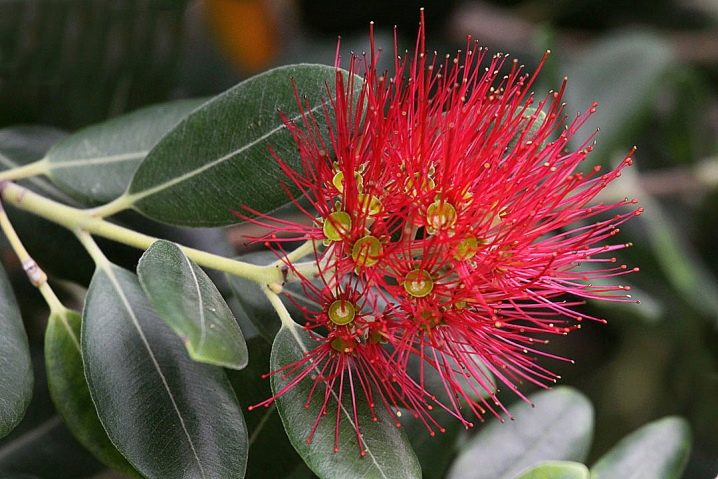
general description
Shoots of metrosideros woody over time. Moreover, their strength indicators are so high that the second name for some varieties of culture is "iron tree". Some species are grown as indoor, the height of which does not exceed 1.5 m. The plant has a shiny foliage that has a deep emerald color. The shade of the bottom is much lighter. The presence of a small cannon is sometimes noted. Variegated varieties look especially interesting. The length of the leaf varies from 5 to 10 cm. There are no notches along the edge. The end can be blunt or sharp.
There is no rest period, so shedding foliage is a process not typical for metrosideros.
January is the time of the beginning of flowering. Unusual flowers form on young branches. They are collected in inflorescences and represent a fluffy bunch, which is completely assembled from very long stamens. The shade depends on the specific type: pink, scarlet, cream, white. The plant is shrouded in a pleasant aroma, which attracts insects and small tropical birds. The culture fades in March, sometimes in May.
In place of the inflorescences, boxes with small seeds appear. The fact that they are ripe will notify her with a dark brown color. An interesting feature of the plant is the rapid loss of seed germination.

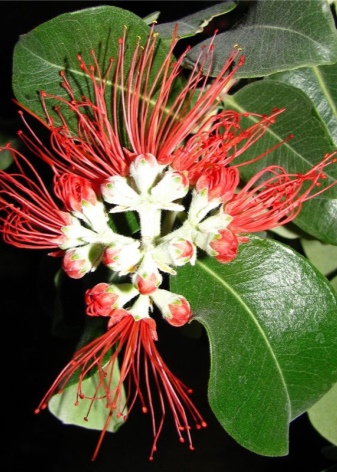
Characteristics of species
Depending on the species, the plant can look like a huge tree (height 25-30 m), a bush or a liana. The shades of the inflorescences, the shape and color of the foliage are also different. Located at a close distance from each other, different types of metrosideros easily interbreed with each other. A natural hybrid arises. That is why artificial breeding of new varieties is practically not practiced: nature does everything by itself.
Felt
The native land of the species is New Zealand. Felt metrosideros is a sacred tree for the island's aborigines and is the centerpiece of many religious practices. The trunk branches out from the base and turns into a spreading spherical crown, covered with oval 8-centimeter leaves. The underside of the leaf plate is covered with a light white fluff. This species blooms in December.
The inflorescence shades range from red to deep pink.
The exception is the Aurea variety, which has yellow flowers. And in the Aureus variety, the leaves have a beautiful golden border.
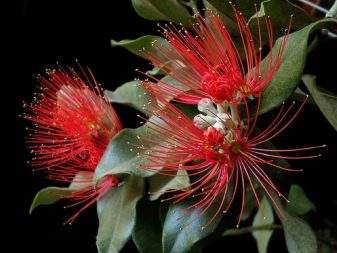
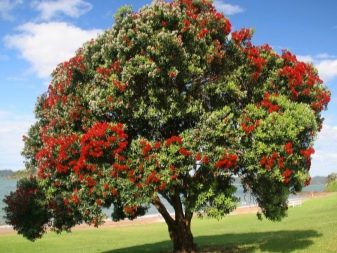
Carmine
The carmine shade of the inflorescences gave the name to the species. It is a liana-like shrub that blooms almost all year round. It is suitable for growing at home (dwarf hybrid). By cutting off the shoots, the plant can easily be given the desired shape. Rounded leaves have a slightly blunt tip. A dwarf hybrid grown in apartments is called "Carousel". Blooms from late winter to early spring. Inflorescences have a reddish tint.

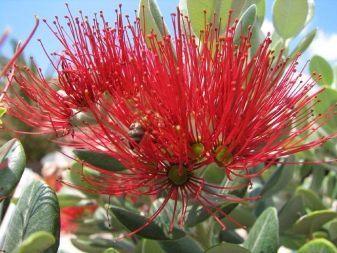
Kermadec
This species is a tree. Its height in the wild reaches 15 m. The evergreen plant is covered with bright red flowers all year round. A variegated variety (Variegata) is grown at home, the special charm of which is given by a yellowish border, framing the central green part of the leaves.
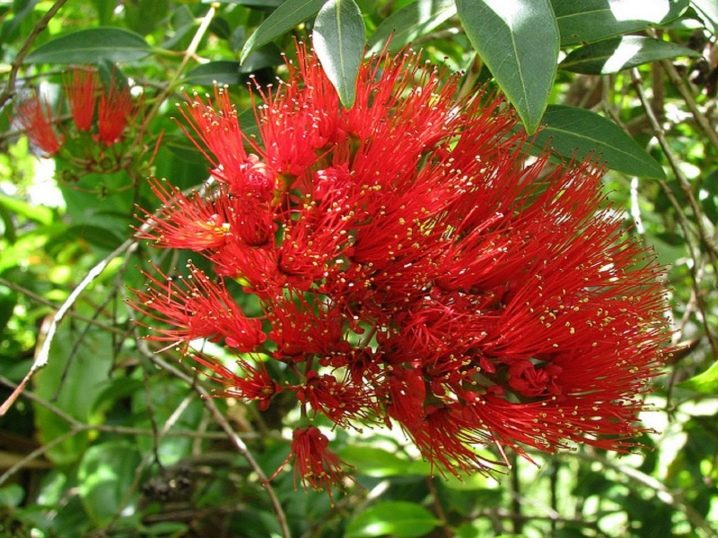
Kholmovoy
The height of the species does not exceed 4 meters, so it looks like a bush or a small tree with a very branched crown covered with rounded leaves. The color of the inflorescences is orange, yellow, salmon. For growing in indoor conditions, the variety "Thomas" is suitable.... The height of such a bush is 1 m.
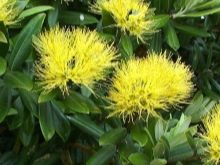
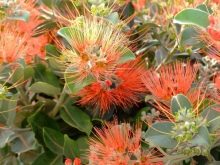
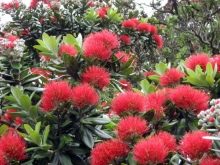
Volatile
The homeland is the Hawaiian Islands, where the indigenous people considered metrosideros sacred, belonging to the deity of volcanoes and fire. Growing conditions are key in shaping the appearance of a plant. It can be a tree, liana, or shrub. The color range of inflorescences is very diverse: yellow, pink, red, salmon, orange. An excellent honey plant attracts with insect aroma. The dense oval leaves are pointed towards the ends.
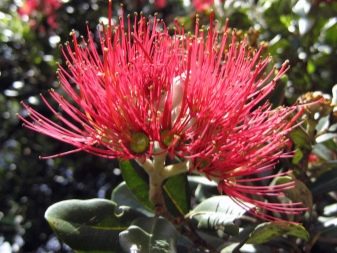

Glittering
Grows in the form of a vine. Its height in indoor conditions reaches 1.5 m, in the wild - 3-4 m. Flowering period: August - December. The dense, elongated leaves are emerald green in color.
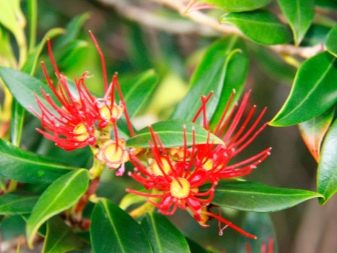
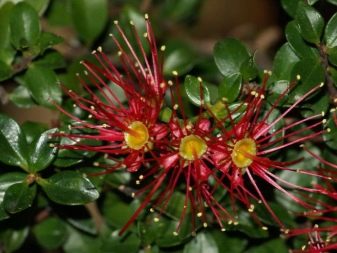
Perforated (Perforata)
It is a liana-like shrub, the height of the shoots of which can reach 4 m. The shoots are densely branched, over time covered with fibrous red-brown bark. The length of small rounded leaves does not exceed 1 cm. Their underside is covered with spots. In the middle of summer, the ends of the shoots are covered with large umbrellas of white inflorescences. After the plant fades, 5 small seeds are formed in the box.

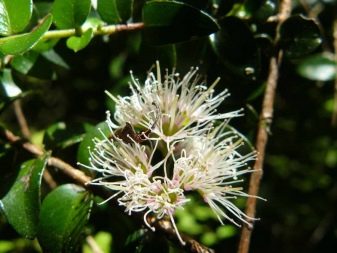
Powerful
Grows in the form of a tall tree with a spreading crown. A characteristic feature is the presence of spots on young leaves. The inflorescences are bright scarlet.
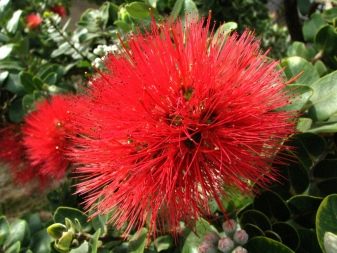
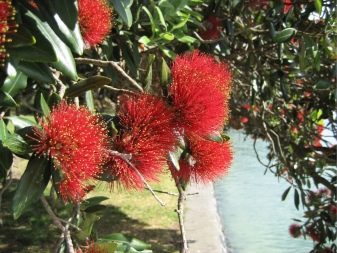
Home care
Despite the fact that metrosideros is an exotic plant, it is not difficult to create the necessary conditions for its maintenance in an apartment. One of the main ones is the abundance of light. With its lack, you will not be able to enjoy the flowering period. The ideal location is the sill of the south or east window. No shading: direct sunlight is not harmful.
In the summer, take the flowerpot out into the garden, balcony or terrace. Ambient temperature should vary from +22 to + 25 ° C. When the plant blooms, it is lowered to +8 + 12 ° C. Fresh air is very necessary for the plant. It easily tolerates drafts and night coolness. Metrosideros powerful is not afraid of even frost at -5 ° C, therefore it is grown outdoors.
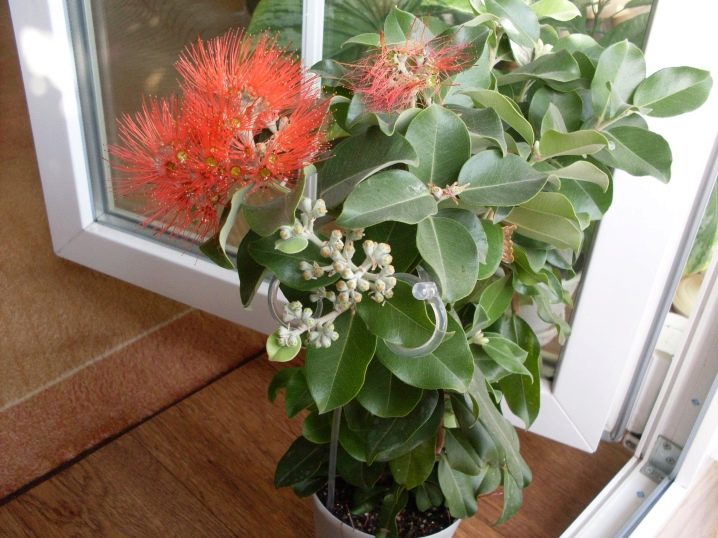
Water the plant very abundantly: in summer it is necessary once a week, in winter - once every 12 days. Pay attention to the condition of the soil. It should be 50% dry before the next watering. Do not overdo it. Excessive moisture will cause rotting of the root system. Use soft, non-chlorinated water.
If the air in the room is too dry, spraying is recommended. But the procedure is prohibited for species with foliage with an edge. Otherwise, ugly stains will appear on them. The ingress of water droplets is also unacceptable on the inflorescences. It threatens to fade.

In March, you need to start fertilizing. For this, complex mineral mixtures are used, intended for flowering plants. The composition is applied along with watering. In this case, be sure to read the instructions so as not to exceed the maximum permissible dose and not harm the plant.
Top dressing is applied 2 times a month until September. Pay attention to the condition of the metrosideros. Yellowed foliage signals that the amount of nutrients needs to be reduced. If you overfeed the plant, it will shed its leaves.
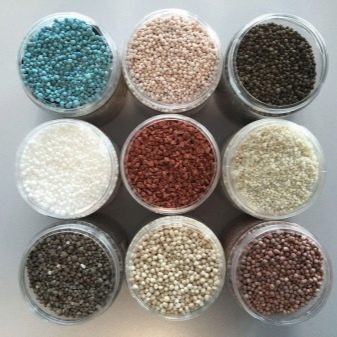
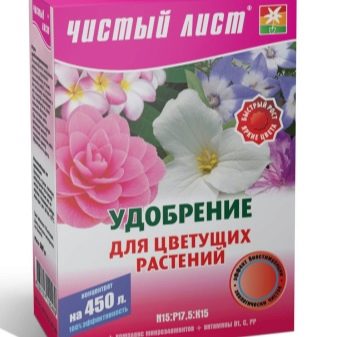
A prerequisite for proper care is pruning. It allows you to preserve the compactness and density of the crown, prolongs the flowering period (when removing wilted inflorescences), gives an aesthetic appearance.
Be sure to remove old and weak branches. Pruning is well tolerated and can be done year-round.
When the plant becomes cramped in the pot, a transplant is necessary. The frequency depends on the age of the metrosideros. If he is still young, then the procedure is performed once a year, an adult needs it once every 3-4 years.
The pots must be placed on the bottom drainage layer (pebbles or vermiculite). The planting substrate consists of from one part of leaf and sod land, two parts of coarse sand or perlite, one part of peat. If you do not want to prepare the mixture yourself, buy a ready-made one (for flowering plants). In a mature culture, spreading and inconvenient for replanting, a partial replacement of the soil in the pots is carried out.
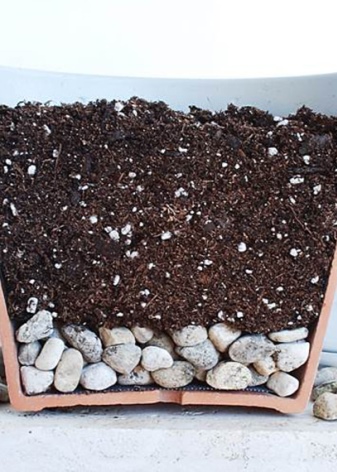

Reproduction
Propagated by metrosideros by seeds or cuttings. The first method is complex. Since the seeds lose their germination quickly, they must be quickly sown into a soil consisting of sand and peat. Next, a greenhouse is created: the tray is covered with a film. Optimum growing temperature: + 21 ° C. Plants obtained in this way will bloom only after 4 years (from the moment of rooting).
A faster method is grafting. Used half-lignified shoots, taken in March - August and having 3-4 internodes. The cut of the workpiece is processed "Kornevin". The stalk is planted for rooting in the ground so that the lower nodes are hidden by a layer of soil, and covered with a film.
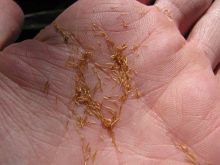
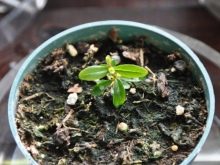
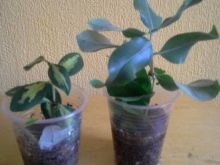
For general information on growing metrosideros, see below.























The comment was sent successfully.